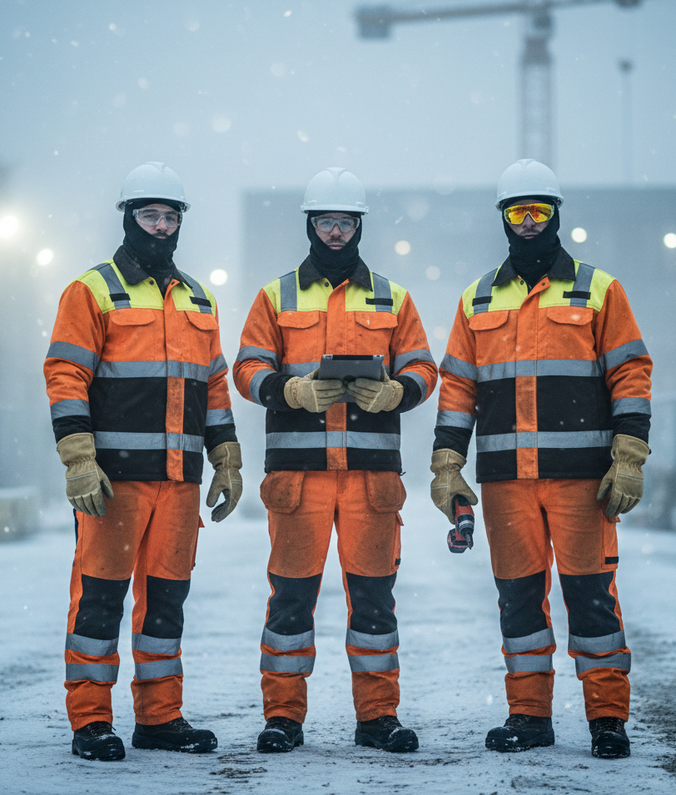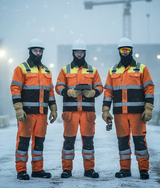Stop the Chill: Essential PPE to Beat Cold Stress in the Workplace
The Winter Hazard: Why November is Prime Time for Cold Stress
As the year wraps up and temperatures drop, industrial, construction, and outdoor workers face a critical, yet often overlooked, workplace hazard: cold stress. Cold stress occurs when skin temperature and internal body temperature drop, leading to serious conditions like hypothermia and frostbite.
November is the ideal time for a PPE audit to ensure your team is equipped not just for comfort, but for compliance and survival. Beyond layering clothes, specialized Personal Protective Equipment (PPE) is crucial for managing the unique risks of working in freezing or near-freezing conditions.
Key PPE Focus Areas for Cold Weather Safety
Cold weather safety goes beyond a warm jacket. It requires targeted protection for the body's most vulnerable areas where heat is lost fastest.
1. Head, Neck, and Face Protection
Up to 50% of body heat can be lost through an uncovered head.
-
Insulated Headwear: Look for thermal knit caps or balaclavas that fit snugly under hard hats without compromising the suspension system. A balaclava is ideal as it protects the neck and face from windburn and frostbite.
-
Safety Glasses and Goggles: While you focus on eye safety, remember cold air can cause rapid fogging, leading to visual impairment and falls. Prioritize eyewear with Anti-Fog Coatings (like the FogLess® 3Sixty™ lenses in the Site Boss line) to maintain clear vision as temperatures fluctuate.
2. Hand Protection (The Critical Link)
The hands are highly susceptible to frostbite and are essential for intricate work, making dexterity a constant challenge in the cold.
-
Layered Gloves: A two-part system is best: a thin, moisture-wicking liner glove for dexterity, topped by a heavy, insulated glove or mitten that provides thermal protection and water resistance.
-
Impact Resistance: For work involving machinery or heavy tools, ensure your insulated gloves still meet ANSI standards for impact resistance and cut protection.
3. Foot Protection
Wet or frozen feet are a leading cause of cold-related injury and are susceptible to trench foot.
-
Insulated, Waterproof Boots: Safety footwear must be rated for low temperatures (often rated by a level of insulation like Thinsulate or similar materials). They must be completely waterproof to keep moisture out.
-
Fit is Vital: Boots must be the right size to allow for thick, thermal socks and still permit circulation. Tight boots restrict blood flow, dramatically increasing the risk of cold injury.
Compliance Check: The Cold Weather OSHA Focus
While OSHA doesn't have a specific Cold Stress Standard, it enforces the General Duty Clause, requiring employers to provide a workplace free from recognized serious hazards.
Key Employer Responsibilities:
-
Provide Training: Train workers on recognizing the signs of cold stress (shivering, confusion, loss of coordination) in themselves and their coworkers.
-
Engineering Controls: Use heaters, wind barriers, or shields to minimize exposure.
-
Administrative Controls: Implement work/rest schedules, encourage warm breaks, and mandate hydration (non-alcoholic, non-caffeinated warm drinks).
-
Ensure Proper PPE: Provide and enforce the use of specialized PPE suited for the ambient conditions, including layers, waterproof outerwear, and specialized hand/foot protection.
The Bottom Line
Preparing for cold weather is not just about avoiding fines; it's about protecting productivity and, most importantly, lives. A small investment in specialized, high-quality cold-weather PPE now can prevent a major incident later.
Ready to gear up your team for winter compliance? Explore our full line of insulated, anti-fog, and weatherproof safety gear.
Recent Posts
-
Stop the Chill: Essential PPE to Beat Cold Stress in the Workplace
The Winter Hazard: Why November is Prime Time for Cold Stress As the year wraps up and temperatures …25th Nov 2025 -
Stop Guessing! The Industrial Guide to Choosing the Right IR Safety Glasses Shade
Selecting the right eye protection in industrial settings is non-negotiable, but when it comes to we …21st Nov 2025 -
Beyond Band-Aids: The Critical Items Your First Aid Kit Always Needs Restocking
As a safety manager, you know that a well-stocked First Aid kit is non-negotiable. But when it comes …19th Nov 2025



